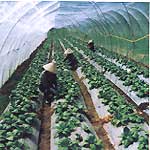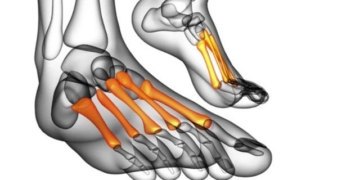A group of scientists from Hanoi University of Agriculture I has introduced a method for producing safe vegetables using high technology without soil.
 |
|
(Photo: TTO) |
At the exhibition, viewers witnessed various types of vegetables such as water spinach, lettuce, herbs, and tomatoes being grown on flat shelves approximately 1 to 2 m2 in size. Some shelves are placed flat, while others are arranged at a slight incline, mimicking the terrain of a hillside. These simple, compact, and movable shelves evoke the concept of “hanging gardens.”
The upper part of the “hanging garden” consists of foam plastic pieces with numerous small holes for planting. Below, the base is made from materials that prevent the nutrient solution (containing macro and micronutrients) from leaking, such as plastic, corrugated metal, or fiber cement. For the inclined “hanging garden,” a collection device is necessary at the lower end to catch water and manually water the plants again, or use a recirculation system if available.
According to Associate Professor Dr. Ho Huu An, this is a high-tech method for producing clean vegetables, which has been researched in the United States for a long time and is now being applied and localized to suit our country’s conditions. With this technology, sowing seeds and growing vegetables do not require soil at all. For the plants to thrive, fertilizers (in liquid form produced by Hanoi University of Agriculture I) utilize over 10 essential macro and micronutrients, combined with clean water such as well water, to ensure the plants grow under normal conditions. With this technology, vegetable growers can fully control the process and prevent vegetables from being contaminated with heavy metals and other toxins.
This technology has a wide range of applications. It can be applied in large-scale vegetable growing facilities, whether covered or outdoor, and can even be used by individual households right on balconies or rooftops of high-rise buildings in urban areas. Particularly, in locations with unfavorable natural conditions for cultivation, such as the residents and soldiers of Truong Sa Island District or border guard stations, this technology offers a promising solution to address the lack of vegetables in daily meals.


















































